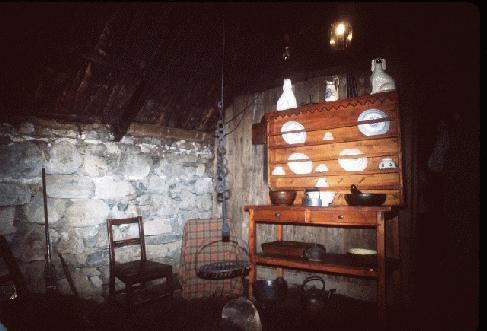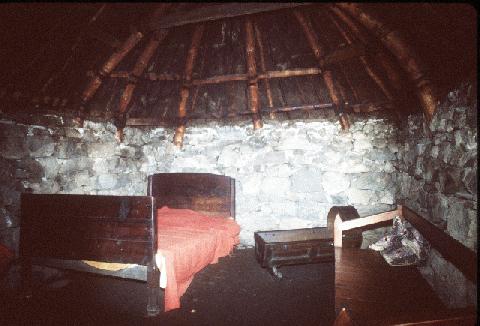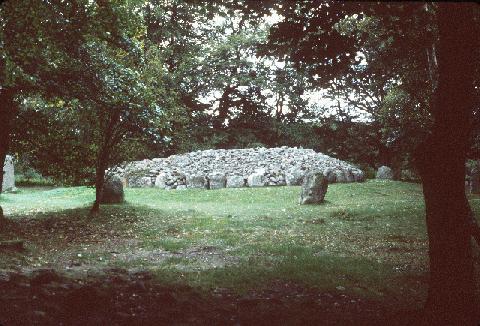
1. One of the stone cairns at Clava Cairns.
From Inverness, we went south to the Clava Cairns. Officially, Clava Cairns is "the exceptional remains of an ancient cemetery," about 4000 years old. Unofficially, it's a place where magic seems possible ... and not necessarily nice magic. The cairns at Clava are a trio of stone barrows with an added feature: a circle of standing stones around each, and perhaps other smaller barrows around them. These are the only barrows with such features in all of the British Isles. Eerie sort of place, and the misty, chilly weather added to the effect.
Sadly, little is known of the culture that built the clans, because most of the cairns' contents are gone and the builders left no known written records. They may have been sun-worshippers, but that's largely a guess based on the fact that the cairns are aligned with the midwinter sunset. Trace evidence from other Clava-type cairns in Scotland suggests that each cairn was used to bury a single high-ranking person, perhaps a village chieftain.
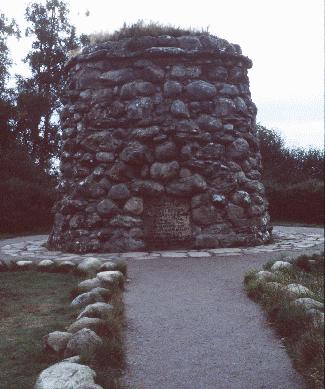
2. The memorial monument at Culloden Battlefield . . .
Next stop was Culloden Battlefield where Bonnie Prince Charlie and his Jacobite army were smashed by Government forces in 1747. The crushing defeat ended the '45 Rising, the last Scottish attempt at armed revolution. After this battle, and the brutal English reprisals that followed, the Stuarts were beaten in spirit as well as in arms. They never again attempted to retake the Scottish throne. There was a visitor's center and the obligatory giftshop, where I bought another book and a claymore-shaped letter-opener. Outside, there was a large memorial to the Highlanders who fell in the Jacobite army, and flags on flagpoles showed where the Government and Jacobite armies had formed their lines before the battle.
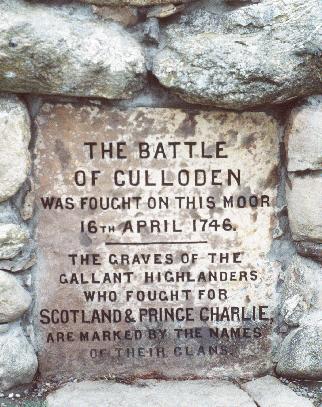
3. . . . and the plaque set into its base.
From Culloden we went south through the Cairngorms, which are similar in general appearance to the Western Highlands that we'd gone through on the first day. In the town of Newtonmore, we spent about an hour and a half in a museum of Highlander life -- a lot like a pioneer museum, "this is how they did it in the old days" sort of thing -- but in the Highlands, "the old days" were within living memory. Among the exhibits were a variety of machines and tools: a 1900s vintage tractor, a horse-drawn fire engine, a couple of looms and spinning wheels, farm machinery, etc. There was also a complete reconstruction of a typical Highlands "black house" or "black hut." In some isolated areas, black houses were still in use until the early part of the 20th century.
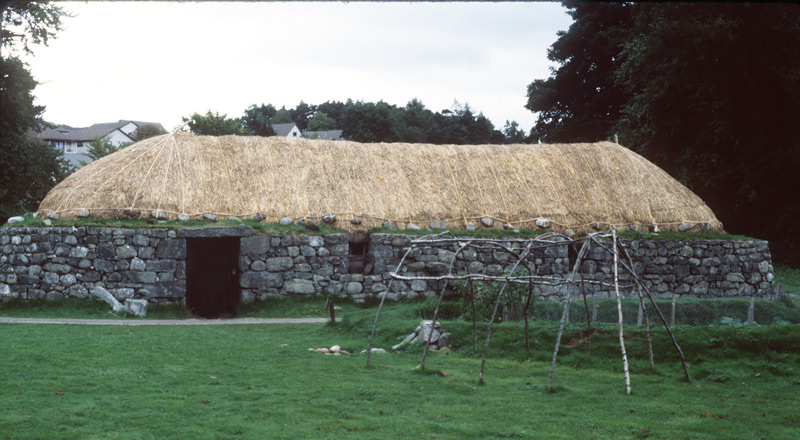
4. The black house seen from the outside. The origin of the name black house isn't clear, but the purpose is: a black house was a simple house design that was common on Highlander small-holds. The walls were built of unmortared stone, with an interior space filled with peat and earth for insulation. The roof was straw thatch. These simple, readily-available building materials meant that the black house was easy to build and easy to maintain. A typical black house was divided into three interior rooms: a livestock room, a dining room, and a bedroom. Click on different parts of this photo to see interior views. Click on each pop-up photo to make it disappear.
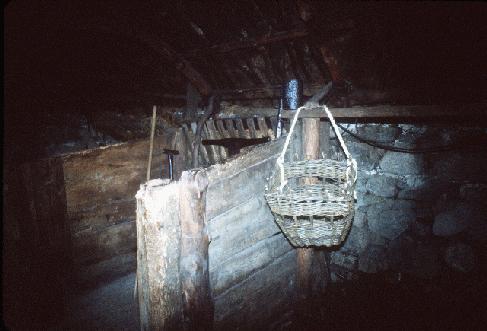
5. The first room inside the black house: the byre, or livestock and storage area. In this example, there was a stall for storing tools and a second stall for the family cow. The cow lived outside from spring to fall, but she spent the winter months in here.
South of Newtonmore, we stopped at the Falls of Doichart, near the village of Killin. The Falls are actually a long stretch of whitewater on the upper River Tay, just above the head of Loch Tay. They're mostly just large rapids, with a few real falls a foot or two high, but nothing more than that.
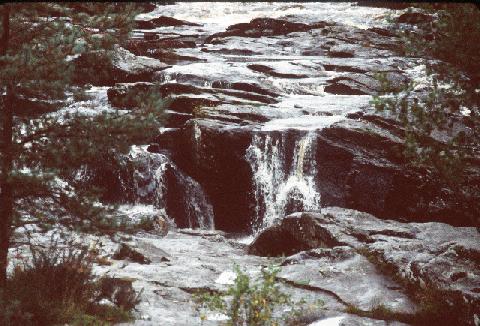
8. One of the small waterfalls in the Falls of Doichart
We eventually wound up in Aberfoyle, near Rob Roy MacGregor's old stomping grounds, and spent the night there. An interesting bit of lore that Jette told us: Rob Roy probably used the name MacGregor rarely if at all. Clan MacGregor included a lot of cattle-thieves, raiders, killers, and just plain unpleasant people, and the entire clan was outlawed in the early 1600s. That Act was still on the books in Rob Roy's time a hundred years later. Simply calling yourself a MacGregor could get you thrown in jail, while a fugitive MacGregor could get himself a pardon just by bringing in the head of one of his clansmen.
